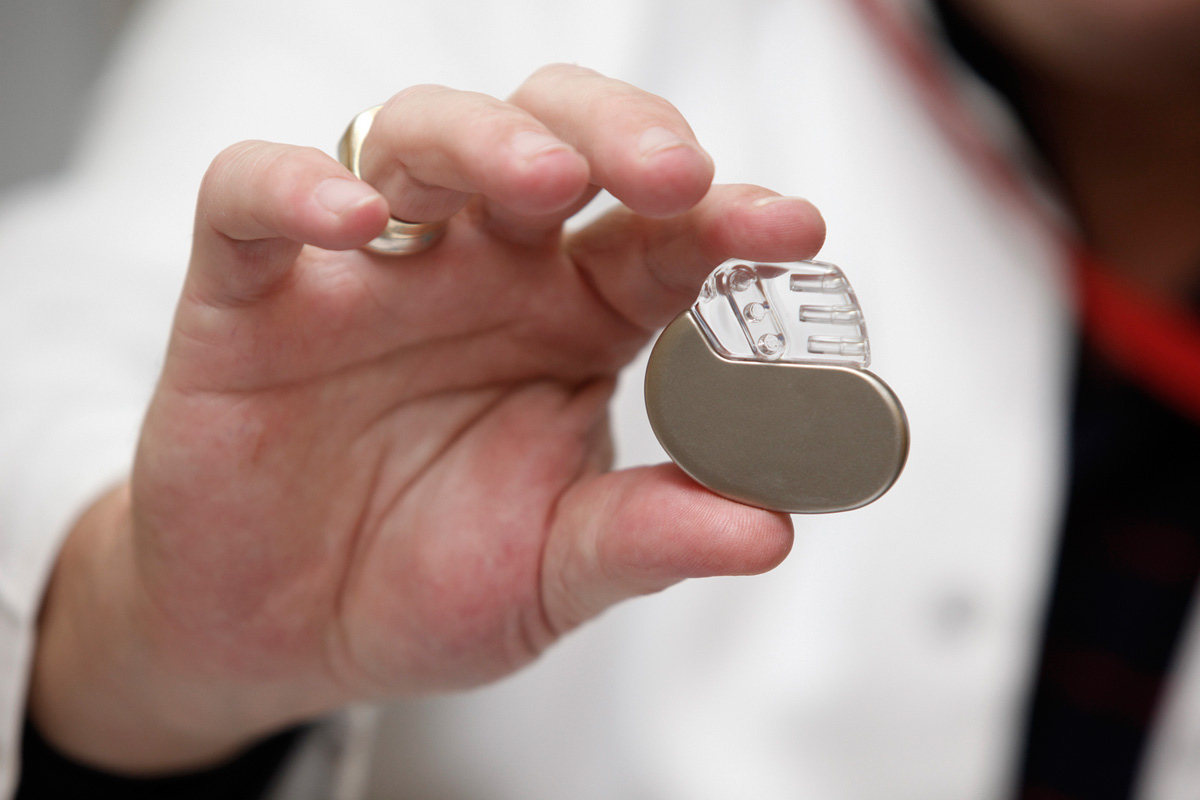Implantable Cardiac Devices: An Overview
In most cases, an arrhythmia occurs due to an electrical disturbance of the heart. In certain cases, a patient may need a pacemaker or implantable cardioverter-defibrillator (ICD) to help control abnormal heart rhythm. The Buckeye Heart & Vascular Institute can provide a pacemaker or implantable cardioverter-defibrillator to patients that may need them as part of our heart and vascular services.
Determining if you need an implantable cardiac device?
Our Buckeye Heart & Vascular Institute team can work with patients to determine if an implantable cardiac device is right for their needs. Our cardiologist may perform one or more tests to determine which type of implantable cardiac device best suits each patient’s needs.
Implantable Cardiac Device Checks: Our board-certified electrophysiologist also offers in-office device checks to ensure devices function appropriately.

Implantable Cardiac Devices: What to Expect
Pacemaker
A cardiac pacemaker is an implantable device that sends electrical pulses to the heart to return it to the normal rhythm. We typically implant a pacemaker in the chest just below the collarbone. A pacemaker can be used to address the electrical signal in the heart that causes arrhythmias.
Pacemakers can be used to:
- Address a slow heartbeat
- Control a fast or irregular heart rhythm
- Prevent dangerous arrhythmias
A pacemaker can be temporary or permanent. Temporary pacemakers are typically used during emergency situations. Permanent pacemakers can help patients manage and control a wide range of heart rhythm concerns.
Why do you recommend a pacemaker?
We may introduce a pacemaker to a patient with heart block, bradycardia, atrial fibrillation, syncope, long QT syndrome, or other arrhythmia-related concerns.
A doctor will perform a series of tests to determine if pacemaker implantation or another treatment is right for your needs. To determine if a patient needs a pacemaker, a doctor may order an EKG, echocardiogram, Holter or event montoir, stress test, or an electrophysiology study.
Implantable Cardioverter Defibrillator
An ICD is a small, battery-powered device placed underneath the skin just below the collarbone. When the heart rate exceeds the normal pace, the ICD delivers an electrical pulse to slow down or speed up the heart rate. When the heart is beating erratically, the ICD can detect the abnormal heart rhythm and delivers an electric shock to return to the normal heartbeat rhythm.
An ICD also records the heart’s rhythm and electrical activity. Information from the recordings can help your doctor tailor your device to meet the demands of your heart.
ICDs are generally for patients with life-threatening arrhythmias. Patients can develop many symptoms when the heart beats too fast, too slow, or too irregularly.
Why do you recommend an ICD?
We may recommend an ICD to restore normal rhythm and reduce the risk of severe cardiac events. We program an ICD to respond to the type of arrhythmia the heart has developed. A doctor may recommend an ICD to children, teens, and adults with abnormal heart rhythms. We may also recommend an ICD if:
- A patient has survived a heart attack and cardiac arrest
- A patient has poor heart function
- Someone diagnosed with bradycardia
- A patient who has a genetic condition that affects the heart rhythm
A physician will perform a series of tests to determine if an implantable cardioverter-defibrillator is right for your needs.
Implantable Cardiac Devices FAQs
Yes, there are some limitations when we first implant the pacemaker, but they are not permanent. There are cardio limitations for the first couple of weeks and months after getting the device. Still, once everything has healed internally from the procedure and you are used to your new device, there should be no limitations.
You can exercise with your pacemaker. However, start slow and discuss your exercise routine with your doctor. Intense exercise can cause serious strain on your pacemaker, so progressively working out and building endurance slowly will be the most healthy and safe way to exercise.
Cell phones have not been shown to interfere with pacemakers or ICDs. They operate at less than 3 watts, so they have far too few watts to interact with anything in a way that should show noticeable damage. We recommend you keep cellular devices in the back pocket rather than in the front shirt pocket.
Batteries usually last 5-7 years, depending on patients’ usage. Once the battery is nearly dying, you’ll need to replace it. Replacing the battery is a procedure that usually requires the patient to stay overnight in the hospital. This ensures that the replacement went properly and the patient is safe before discharging them.

